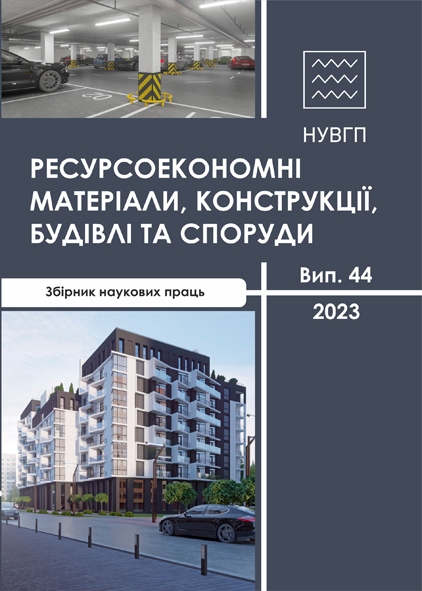SIMULATION OF FROST RESISTANCE OF THE COMPOSITION OF LIGHT CARBONATE SLAG CONCRETE
DOI:
https://doi.org/10.31713/budres.v0i44.01Abstract
In the last century, the hydraulic binding properties of compounds of alkali metals, lithium, sodium, potassium, rubidium, and cesium were discovered, on the basis of which alkaline and alkaline earth binders were developed. Slag-earth cements are a private case of such binders. The use of concretes on slag-alkaline cements allows to increase the grade of cements, as well as to expand the range of aggregates, to reduce the consumption of fuel, energy, and transportation means. New technologies for the production of silicate structures are being developed, based on new hydraulically binding and contact hardening concrete mixes. It is based on the production of products that allow to give them strength and water resistance at the time of pressing. This phenomenon was called the effect of ordering the structure of silicate systems. The method made it possible not only to fundamentally change the technology of the synthesis of concrete stone, to exclude formwork from the production of the structure, but also to significantly reduce the time for their acquisition of water resistance, to maximally mechanize and automate production. The technology of obtaining contact hardening concrete opens up unlimited possibilities for improving the production of building structures, as well as for expanding the raw material bases of construction due to the use of local dispersed soils, silicate and alkaline industrial waste. Composite binder based on ground slag and carbonate rocks, capable of forming strong structures by their activation, allows to reduce the cost of production of building materials, wall blocks, bricks, facing tiles. The solution of the technological scheme of some energy-intensive and ecologically polluted processes, the expansion of the local cheap raw material base leads to the saving of raw materials, fuel resources, electricity and preservation of the environment. Technologies do not require significant reconstruction of brick production enterprises and can be implemented on a large scale.

